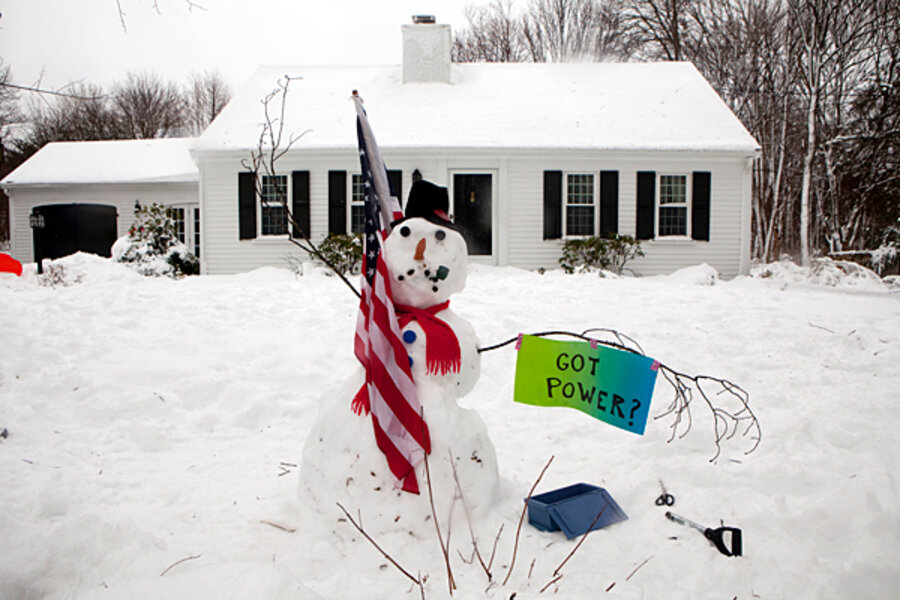Shoveling Nemo
Loading...
Dear readers, the word of the moment here in New England is, inevitably, blizzard. And it turns out to be not all that old, at least not in its meteorological sense.
But didn't William Bradford and the Mayflower Pilgrims face blizzards? Other early explorers of the New World before that? And Beowulf and his crowd before that, back in the old country?
Well, no. The Online Etymology Dictionary, which tracks the Oxford English Dictionary pretty closely, traces blizzard, in the sense of "strong, sustained snowstorm," back only to 1859. Merriam-Webster Online pegs it as even later: 1870. Neither source offers much to explain its origin: "Obscure" is the best the etymology dictionary can offer. It speculates that there may be a connection with blaze in the sense of a "white spot," as on an animal, and notes that there is a Proto-Germanic root blas – suggesting "shining" or "white" – as in bleach, or the German Blitz, "lightning," which comes, of course, in white flashes.
I can buy this, although the whiteness here has been more than just a spot or a flash. Blizzard in the sense of a severe snowstorm came into general use in the United States during the winter of 1880-81, and perhaps was originally a colloquial figurative usage in the Upper Midwest – where they would have needed a word for "serious snowstorm." That means that during the Blizzard of 1978 – whose 35th anniversary came just days before the latest storm, Nemo, hit – blizzard had been in general use less than a century.
The National Weather Service online glossary defines a blizzard as a period of three hours or more involving winds of 35 miles per hour or more and falling or blowing snow reducing visibility to a quarter mile or less. It's the strength of the wind and not the amount of snow that is the critical factor.
Before it came to refer so concretely to a severe snowstorm, blizzard had other uses: It meant a "violent blow" or could refer to a "hail of gunfire," in the early 19th century.
Oxford says blizzard is probably "more or less onomatopoeic," which I have trouble swallowing. What do you hear during a severe snowstorm that sounds like "blizzard, blizzard, blizzard"?
What you do hear is wind, and the round-the-clock rumble of heavy equipment out on maneuvers – sometimes attempting to scrape away snow before it's begun falling in earnest. Before the worst sets in, there's the happy gurgly sound of small children, delighted to be towed on sleds down the street by daddies briefly liberated from their ordinary professional tasks but not yet needed as domestic shovelers in chief. Afterward come the sounds of the snowblowers, like an odd community orchestra; the sound of spinning wheels of cars; the rumble of still more heavy equipment through the streets.
Ethan Gilsdorf, writing at WBUR.org, recalled an episode on his street that illustrated the kind of miracle of neighborliness a serious storm can bring about: "[S]ometime before dawn, the loud, ill-mannered teen two doors down from me took his family's snow blower and cut a swath through the foot-high drifts, not only in front of his house, but down the entire block."
He's not the only one to observe how the kind of enforced timeout of a major storm has its advantages. It slows us down, focuses us on essentials, connects us with one another, and sometimes even makes us better people.







